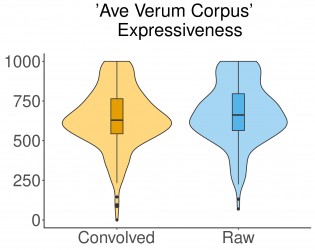The paper entitled Experimental Enhancement of Feelings of Transcendence, Tenderness and Expressiveness by Music in Christian Liturgical Spaces, by López-Mochales, Jiménez-Pasalodos, Valenzuela, Gutiérrez-Cajaraville, Díaz-Andreu & Escera has just been published in the journal Frontiers in Psychology.
This paper is another outcome of our collaboration with archaeologist Prof. Margarita Díaz-Andreu, ICREA Research Professor at our University (Department of History and Archaeology), in the frame of the ERC Advanced grant ARTSOUNDSCAPES – The sound of special places: exploring rock art soundscapes and the sacred.
In this work we studied listeners’ emotional reactions to two musical pieces from English composers of the Renaissance period when presented with and without the acoustics from several Christian temples. We observed an effect of the acoustic condition (with vs. without the temple-like acoustics) on the transcendence, expressiveness and tenderness experienced by participants during the listening.

The full abstract reads as follows:
In western cultures, when it comes to places of worship and liturgies, music, acoustics and architecture go hand in hand. In the present study, we aimed to investigate whether the emotions evoked by music are enhanced by the acoustics of the space where the music was composed to be played on. We explored whether the emotional responses of western naïve listeners to two vocal pieces from the Renaissance, one liturgical and one secular, convolved with the impulse responses of four Christian temples from the United Kingdom, were modulated by the appropriate piece/space matching. In an alternative forced choice task where participants had to indicate their preference for the original recording of the piece (not convolved with any temple-like acoustics) vs. the convolved one, no significant differences were found. However, in the tasks where participants rated their emotional response to each piece and acoustic condition, the factorial ANCOVA analyses performed on the results revealed significant effects. We observed that, across pieces and spaces, participants found the temple-like acoustics as more transcendent, compared to the acoustics of the original version of the pieces. In addition, they rated the secular piece as more tender and the liturgical piece as more expressive in its original versions, compared to the convolved ones. We conclude that the acoustic signature of the four Christian temples causes an exaltation of certain emotions on listeners, although this effect is not associated to one or another musical piece.
Permanent DOI: https://doi.org/10.3389/fpsyg.2022.844029

